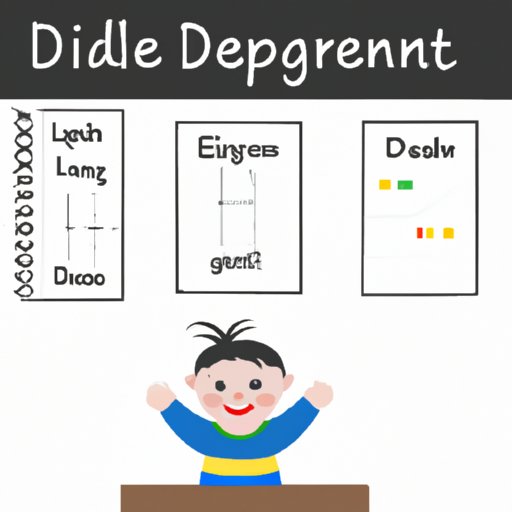I. Introduction
Language and literacy development are crucial to children’s success in school and beyond. As educators and parents, we are continually seeking ways to support children’s acquisition of language skills. One critical aspect of language development is understanding the role of digraphs. In this article, we will explore what a digraph is, why they are significant in literacy processes, and how to teach children about digraphs.
II. Informational: What is a Digraph?
A digraph is a combination of two letters that represent one sound. The sound can be a consonant or a vowel sound. Examples of consonant digraphs include ch, th, sh, ph, and wh. Examples of vowel digraphs include ai, ee, ea, oa, and ie. Digraphs are all around us in the English language, and we often use them without even realizing it. For example, in the word “ship,” the letters sh form a digraph that represents the sound /sh/.
Digraphs play a crucial role in literacy development. They provide young readers and writers with a tool for decoding and encoding words. A child who knows that th represents one sound will have a much easier time sounding out words like “thumb” or “think.” By learning digraphs, children can more easily recognize and spell words, leading to improved reading comprehension and writing fluency.
III. Tutorial: Teaching Children about Digraphs
Teaching children about digraphs can be a fun and engaging process. Here is a step-by-step guide for teaching children about digraphs:
- Introduce the concept of digraphs and share examples of commonly used digraphs.
- Practice identifying digraphs in words and sentences. You can use flashcards, games like “I Spy,” or digital resources like online games or apps.
- Have children practice reading and writing words with digraphs. You can use worksheets, whiteboards, or writing games like Hangman.
- Encourage children to incorporate digraphs into their writing. Challenge them to write sentences or stories that use specific digraphs.
- Use books, songs, and other media that emphasize digraphs to reinforce learning.
IV. History: The Evolution of Digraphs in Language
Digraphs have a fascinating history that spans across different languages and eras. The use of digraphs can be traced back to ancient Greek and Latin, where they were used to represent certain sounds. Many modern European languages, including English, French, and Spanish, have incorporated digraphs into their writing systems.
In literature, digraphs have played a prominent role in poetic forms like haikus and sonnets. They have also been used by authors to create puns, wordplay, and other effects. For example, in Lewis Carroll’s “Jabberwocky,” the poem’s nonsense words rely heavily on digraphs.
V. Comparative: Comparing Digraphs with Other Linguistic Features
Digraphs are just one type of linguistic feature that can be used to represent sounds in language. Here is a comparison of digraphs with other types of linguistic features:
- Digraphs: Two letters that represent one sound
- Diphthongs: Two vowels that blend to form a new sound
- Double consonants: Two of the same consonants that indicate a short vowel sound
- Vowel pairs: Two vowels that stand next to each other but represent their individual sounds
Understanding the differences between these linguistic features can help readers and writers better recognize and use them in language.
VI. Theoretical: The Linguistic and Cognitive Processes Involved in Digraph Recognition
Digraphs rely on complex linguistic and cognitive processes in the brain. Phonetically, digraphs can be challenging to recognize because they represent one sound that is made up of two letters. Similarly, phonologically, the processing of digraphs can be complicated because they require a different processing method than single-letter sounds.
Research has shown that the brain processes digraphs differently than single-letter sounds. For example, when reading a word with a digraph, the brain may process the letters simultaneously, whereas, with single-letter sounds, the brain processes each letter in sequence. These differences in processing have implications for how we teach children about digraphs and support their literacy development.
VII. Conclusion
Digraphs are an essential aspect of language and literacy development. By teaching children about digraphs, we can equip them with the skills they need to recognize and use language more fluently. Digraphs have a fascinating history and are just one of many linguistic features we use to communicate. Understanding their significance can deepen our understanding of language and the brain’s cognitive processes.
